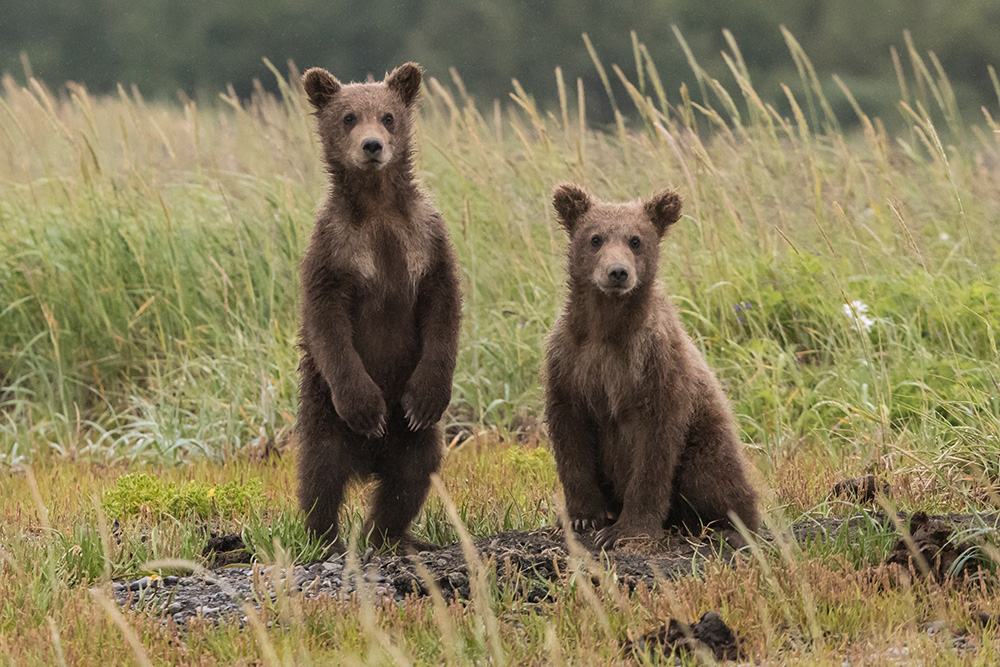The ACI took place from 5 to 8 December 2022 in Newcastle upon Tyne. It is the world’s leading conference on animal-computer interaction. The proceedings were published in the ACM Library on March 30, 2023. They include the paper “A Face Recognition System for Bears: Protection for Animals and Humans in the Alps” by Oliver Bendel and Ali Yürekkirmaz. From the abstract: “Face recognition, in the sense of identifying people, is controversial from a legal, social, and ethical perspective. In particular, opposition has been expressed to its use in public spaces for mass surveillance purposes. Face recognition in animals, by contrast, seems to be uncontroversial from a social and ethical point of view and could even have potential for animal welfare and protection. This paper explores how face recognition for bears (understood here as brown bears) in the Alps could be implemented within a system that would help animals as well as humans. It sets out the advantages and disadvantages of wildlife cameras, ground robots, and camera drones that would be linked to artificial intelligence. Based on this, the authors make a proposal for deployment. They favour a three-stage plan that first deploys fixed cameras and then incorporates camera drones and ground robots. These are all connected to a control centre that assesses images and developments and intervenes as needed. The paper then discusses social and ethical, technical and scientific, and economic and structural perspectives. In conclusion, it considers what could happen in the future in this context.” The proceedings can be accessed via dl.acm.org/doi/proceedings/10.1145/3565995.
Accepted Papers of ACI’22
The conference program for ACI’22 will be available in the course of November. In the meantime, the website lists the accepted papers in alphabetical order. Among them are the papers “A Face Recognition System for Bears: Protection for Animals and Humans in the Alps” (Oliver Bendel and Ali Yürekkirmaz), “A Framework for Training Animals to Use Touchscreen Devices for Discrimination Tasks” (Jennifer Cunha and Corinne Renguette), “Politicising Animal-Computer Interaction: an Approach to Political Engagement with Animal-Centred Design” (Clara Mancini, Orit Hirsch-Matsioulas, and Daniel Metcalfe), and “TamagoPhone: A framework for augmenting artificial incubators to enable vocal interaction between bird parents and eggs” (Rebecca Kleinberger, Megha Vemuri, Janelle Sands, Harpreet Sareen, Janet M. Baker). ACI2022 will take place 5-8 December 2022, hosted by Northumbria University, Newcastle upon Tyne, UK.
Towards Animal Face Recognition
Face recognition for humans is very controversial, especially when it comes to surveillance or physiognomy. However, there are also other possible applications, for example in relation to animals. At the moment, individuals are mainly tracked with the help of chips and transmitters. However, these are disturbing for some of the animals. Further, the question is whether one should interfere with living beings in this way. In addition, animals are constantly being born that escape monitoring. The project “ANIFACE: Animal Face Recognition” will develop a concept of a facial recognition system that can identify individuals of bears and wolves. These are advancing more and more in Switzerland and need to be monitored to protect them and affected people (and their agriculture). Facial recognition can be used to identify the individual animals and also to track them if there are enough stations, which of course must be connected with each other. An interesting sidebar would be emotion recognition for animals. The system could find out how bears and wolves are feeling and then trigger certain actions. The project was applied for in July 2021 by Prof. Dr. Oliver Bendel, who has already designed and implemented several animal-friendly machines with his teams. In August, it will be decided whether he can start the work.
IBM will Stop Developing or Selling Facial Recognition Technology
IBM will stop developing or selling facial recognition software due to concerns the technology is used to support racism. This was reported by MIT Technology Review on 9 June 2020. In a letter to Congress, IBM’s CEO Arvind Krishna wrote: “IBM firmly opposes and will not condone uses of any technology, including facial recognition technology offered by other vendors, for mass surveillance, racial profiling, violations of basic human rights and freedoms, or any purpose which is not consistent with our values and Principles of Trust and Transparency. We believe now is the time to begin a national dialogue on whether and how facial recognition technology should be employed by domestic law enforcement agencies.” (Letter to Congress, 8 June 2020) The extraordinary letter “also called for new federal rules to crack down on police misconduct, and more training and education for in-demand skills to improve economic opportunities for people of color” (MIT Technology Review, 9 June 2020). A talk at Stanford University in 2018 warned against the return of physiognomy in connection with face recognition. The paper is available here.
Towards an Anti Face
Face recognition in public spaces is a threat to freedom. You can defend yourself with masks or with counter-technologies. Even make-up is a possibility. Adam Harvey demonstrated this in the context of the CV Dazzle project at the hacker congress 36C3 in Leipzig. As Heise reports, he uses biological characteristics such as face color, symmetry and shadows and modifies them until they seem unnatural to algorithms. The result, according to Adam Harvey, is an “anti face”. The style tips for reclaiming privacy could be useful in Hong Kong, where face recognition is widespread and used against freedom fighters. Further information can be found on the CV Dazzle website. “CV Dazzle explores how fashion can be used as camouflage from face-detection technology, the first step in automated face recognition.” (Website CV Dazzle)
Permanent Record
The whistleblower Edward Snowden spoke to the Guardian about his new life and concerns for the future. The reason for the two-hour interview was his book “Permanent Record”, which will be published on 17 September 2019. “In his book, Snowden describes in detail for the first time his background, and what led him to leak details of the secret programmes being run by the US National Security Agency (NSA) and the UK’s secret communication headquarters, GCHQ.” (Guardian, 13 September 2019) According to the Guardian, Snowden said: “The greatest danger still lies ahead, with the refinement of artificial intelligence capabilities, such as facial and pattern recognition.” (Guardian, 13 September 2019) The number of public appearances by and interviews with him is rather manageable. On 7 September 2016, the movie “Snowden” was shown as a preview in the Cinéma Vendôme in Brussels. Jan Philipp Albrecht, Member of the European Parliament, invited Viviane Reding, the Luxembourg politician and journalist, and authors and scientists such as Yvonne Hofstetter and Oliver Bendel. After the preview, Edward Snowden was connected to the participants via videoconferencing for almost three quarters of an hour.
The New Dangers of Face Recognition
The dangers of face recognition are discussed more and more. A new initiative is aimed at banning the use of technology to monitor the American population. The AI Now Institute already warned of the risks in 2018, as did Oliver Bendel. The ethicist had a particular use in mind. In the 21st century, face recognition is increasingly attempted to connect to the pseudoscience of physiognomy, which has its origins in ancient times. From the appearance of persons, a conclusion is drawn to their inner self, and attempts are made to identify character traits, personality traits and temperament, or political and sexual orientation. Biometrics plays a role in this concept. It was founded in the eighteenth century, when physiognomy under the lead of Johann Caspar Lavater had its dubious climax. In his paper “The Uncanny Return of Physiognomy”, Oliver Bendel elaborates the basic principles of this topic; selected projects from research and practice are presented and, from an ethical perspective, the possibilities of face recognition are subjected to fundamental critique in this context, including the above examples. The philosopher presented his paper on 27 March 2018 at Stanford University (“AI and Society: Ethics, Safety and Trustworthiness in Intelligent Agents”, AAAI 2018 Spring Symposium Series). The whole volume is available here.






